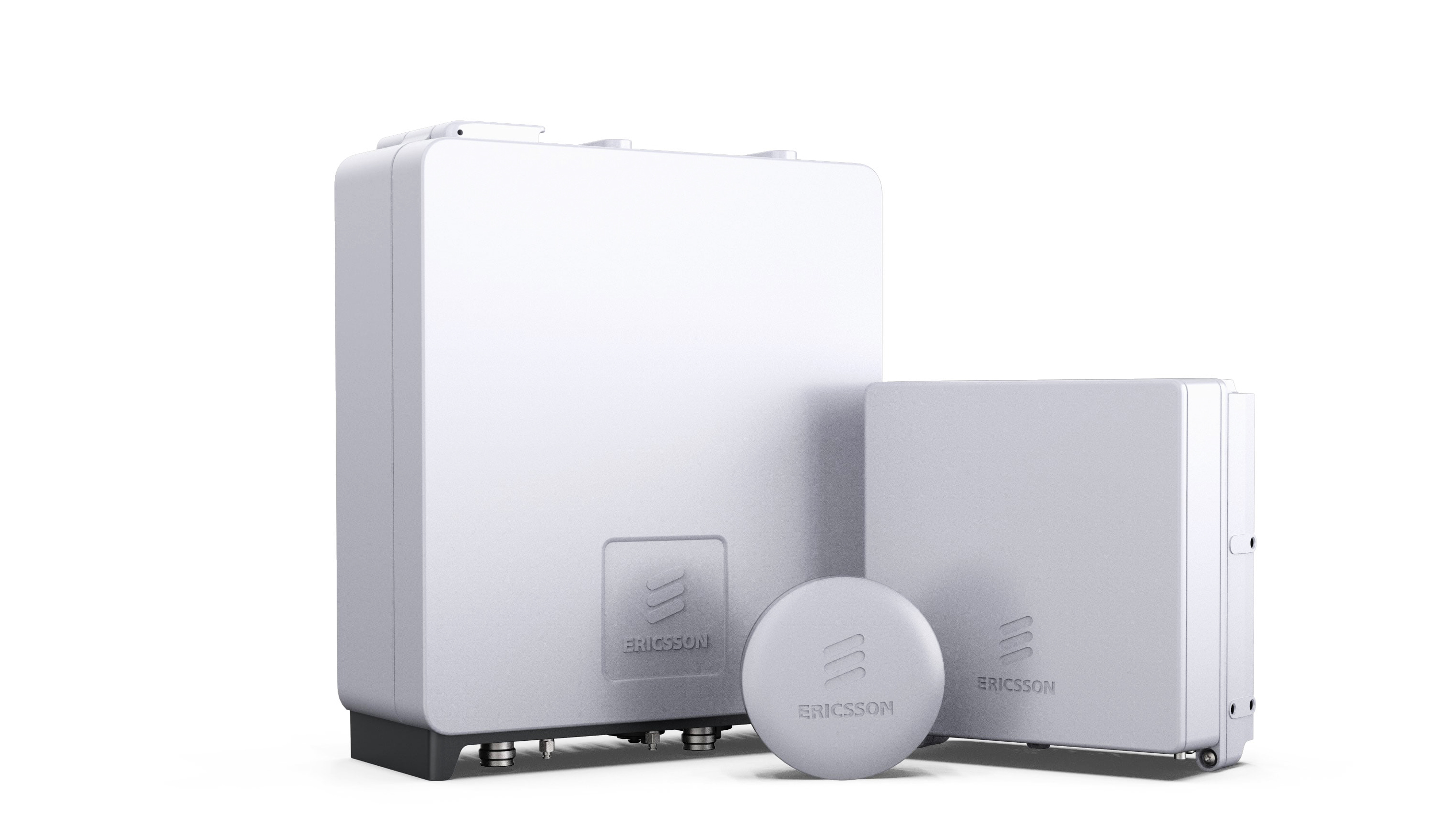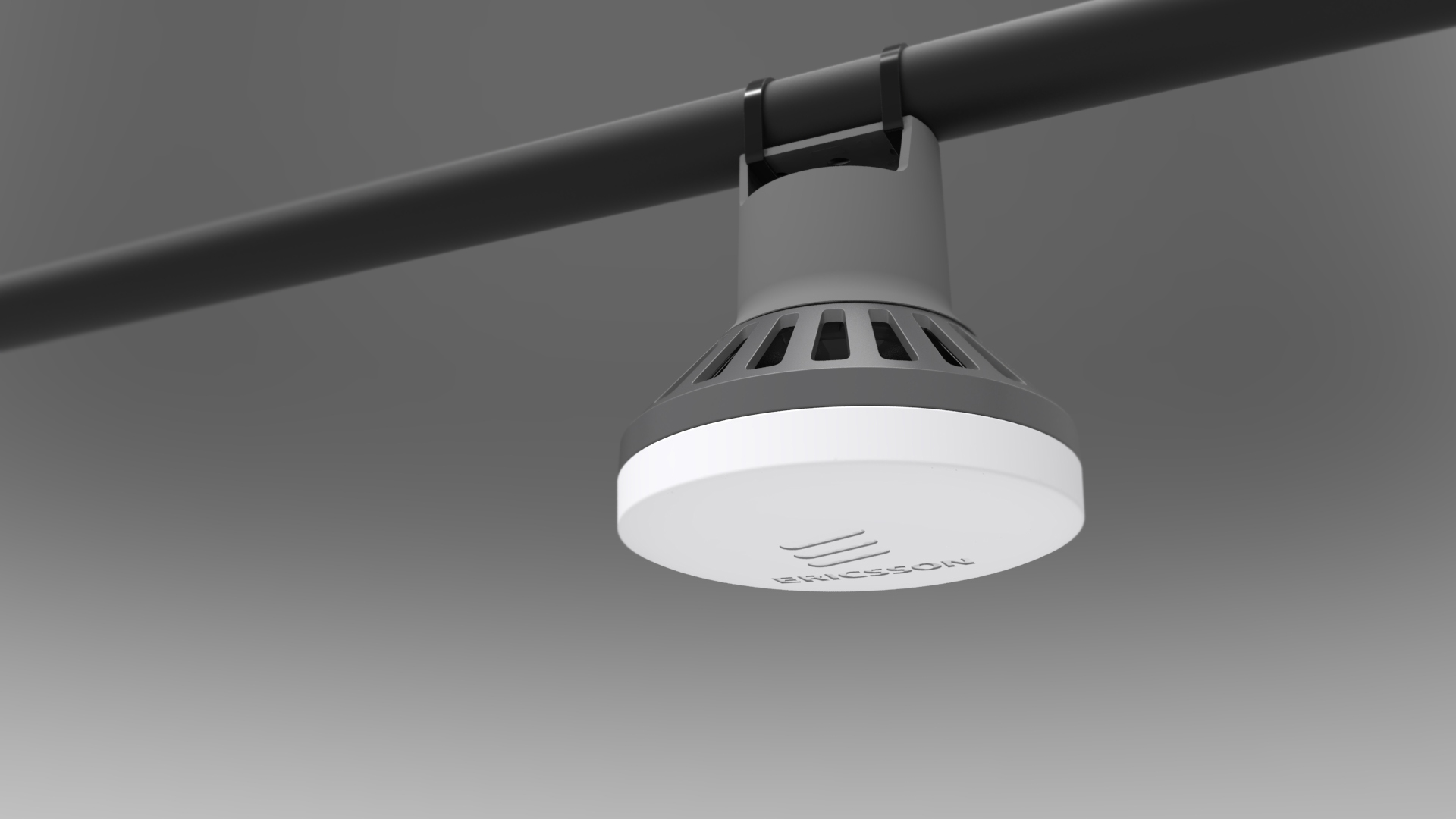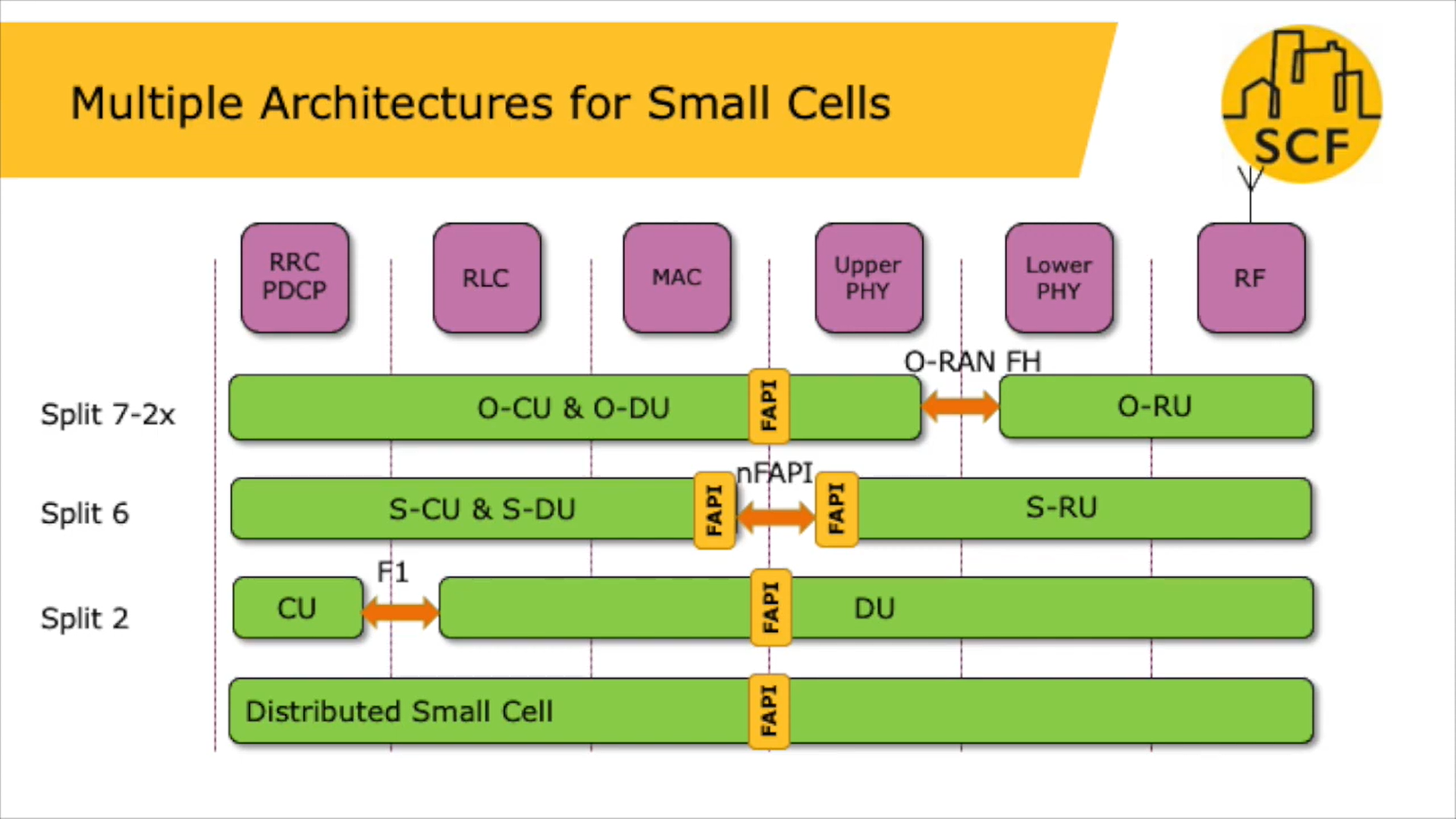5G small cells: everything you need to know
Femtocells, picocells and microcells make up the three types of 5G small cells, and in this overview we explain why they are so vital for getting mmWave 5G into the right places.

According to a report from Fortune Business Insights, the global investment in 5G small cell technology is set to increase from $175m in 2019, to $15.9bn by 2026, resulting in a huge compound annual growth rate (CAGR) of 81.9% in that period.
The reason for this expected growth in 5G small cell technology is because millimeter wave signals – the gold standard of 5G connectivity – don't travel very far, and can’t penetrate walls, therefore making small cells vital for in-building coverage.
5G small cell networks
There are different types of 5G small cells; femtocells, picocells, and microcells, all providing different coverage limits. Broadly speaking, femtocells reach 10 meters, picocells 200 meters, and microcells around two kilometers.
And the term small cell is a catch-all that describes all the above mobile base stations, used to boost signals in indoor areas, such as shopping centres and offices. With the deployment of mmWave technologies within urban areas currently requiring the need for thousands of these small cell antennas to boost network capacity.
This densification of 5G network infrastructure is both expensive and time-consuming, and it's why 5G small cell technology, for now, will be the preserve of dense urban environments, as well as buildings in crowded places such as sports stadiums.
Not a new kid on the block
Small cells aren’t new tech. Indeed, the femtocells used in 3G/4G cellular boosters – which work over your home or business broadband – are small cells. One of the best-known of these is Vodafone SureSignal. (Although using this technology for making calls is increasingly being sidelined in favour of Wi-Fi Calling, with more and more handsets now able to route calls over Wi-Fi when a cellular signal degrades.)
The small cells used in 5G networks get their connection via a macrocells, before sending data from one small cell to another in a relay. This helps carry signals over much larger distances.
SIGN UP FOR E-MAIL NEWSLETTERS
Get up to speed with 5G, and discover the latest deals, news, and insight!

For 5G signals sent over mmWave, the number of these small cells will need to increase exponentially, and be placed much closer together to move the shorter waves from one site to the next without a user dropping connection or losing speed. One solution, put forward by Samsung, is to fit 5G cells to existing street lights and lamp posts.
5G small cells and towers
The use of cell towers will be restricted to lower-level spectrum, and within urban settings 5G operators will instead rely on 5G microinfrastructure such as small cells, alongside traditional macroinfrastructure, like 5G towers.
However, some of the limitations that apply to conventional masts also apply to small cells. Operators must ensure they have backhaul – either fibre or wireless – at the site. There must be an appropriate power source and operators must have physical access to the site. This might mean complicated or lengthy negotiations with the landowner or through a public authority, and there have been legal proceedings in the US to ensure that mobile network operators are not excessively charged for the installation of 5G small cells in cities.

Regulating 5G small cells
One of the biggest challenges within the world of 5G small cells is coming up with a set of industry standards and definitions for this emerging tech. To this end, the Small Cell Forum (SCF) - whose members include Airspan, AT&T, Cisco, CommScope, Ericsson, Huawei, Nokia, Qualcomm, Samsung, and Vodafone - has begun publishing the first “informed and consensual” overview of 5G small cell network architectures and product definitions.
"In the 5G era, small cells will be deployed in a far wider range of scenarios, and form factors and architectures will be extremely varied."
Prabhakar Chitrapu, Small Cell Forum.
Titled ‘5G Small cell architecture and product definitions’, this is the first such study of its kind, with the aim of providing an informed view of the most important configurations and specifications for companies deploying small cells between now and 2025.
“In the early days, small cells looked fairly similar, regardless of the environment in which they would be deployed, and were easily distinguishable in size, weight and power output from other mobile equipment,” said Prabhakar Chitrapu, Chair of Small Cell Forum. “In the 5G era, small cells will be deployed in a far wider range of scenarios, and form factors and architectures will be extremely varied.”
Main recommendations for 5G small cells
Headline elements of the new report include a clear definition of a 5G small cell network, key indoor and outdoor small cell deployment scenarios, a summary of 5G small cell RAN architecture options, an overview of small cell regulation and power classes, and a reference to hardware configurations for the main 5G small cell products expected to launch over the next five years.
“The form factor, power, size, interfaces and specification will vary according to the use case and deployment scenario, and with the introduction of virtualized, disaggregated networks, some small cells will consist of two or three elements, while others will still be all-in-one,” said Chitrapu. “It is clear that old definitions are now inadequate, and there are clear and present dangers of the industry fragmenting between hundreds of different designs with insufficient common features to achieve any scale.”
The report aims to provide a consensus view and concise definition of the types of 5G small cells being rolled out now and in the near future. It also includes definitions of the key characteristics of the different types of commercially viable 5G small cell RAN products that will be available over the next five years, including 3GPP and O-RAN Alliance 5G disaggregated open RAN specifications – work that covers macrocells, but also includes microcells and picocells.
"One would have thought that a small cell is well defined; however, it has taken significant effort to work out what a 5G small cell is."
Vicky Messer, Picocom.
"Small cells, or femtocells as they were previously known, have played an increasingly important role in wireless networks since their introduction more than a decade ago. One would have thought that a small cell is well defined; however, it has taken significant effort to work out what a 5G small cell is,” remarked Vicky Messer, Director, Product Management at Picocom.
It is hoped that the report will enable the networking industry to innovate within “common, agreed design frameworks”, which will support product diversity, whilst also maintaining scalability and interoperability as 5G small cells are increasingly installed in our communities over the next five years.
15. Smart contracts for small cells and beyond
Jurie Roux, product marketing manager at TEOCO, thinks that operators will need to address how to automate and manage small cell contracts, as he explained in our 20 industry predictions for 5G in 2021 post.
"The regular joke is that blockchain is a solution in search of a problem. With telecoms, it’s found it. Infrastructure and hardware is often a mess of complex relationships and agreements, and smart contracts that run on blockchain can manage these relationships effectively," Roux explained.
"The rollout of 5G also means also rolling out hundreds of thousands of small cells across cities and towns over the next year."
Jurie Roux, TEOCO.
"The rollout of 5G also means also rolling out hundreds of thousands of small cells across cities and towns over the next year. Many of the best sites for these small cells involve complicated right-of-way issues that will require resolution.
"Every municipality has its own rules resulting in complex contracts between carriers, equipment vendors, landowners, technology partners and government agencies. Adapting contracts for each of these is tricky, but made much easier by using smart contracts that replace legalese with code, and use blockchain to record transactions. This is one example that could start the use of blockchain in mobile networks."
SCF launches the 5G nFAPI 1.0 spec
The Small Cell Forum (SCF) has published the first release of the 5G nFAPI 1.0 specification for 5G small cell deployment, which it claims is a: “Highly flexible next-generation network interface which leverages the widely adopted FAPI MAC/PHY API used in the vast majority of the world’s millions of deployed System-on-a-Chip (SoC) based small cells.”
Put simply, this will eventually enable fully open, multi-vendor 5G small cell designs, right down to the chip level.
The announcement adds 5G network-FAPI (nFAPI) to the already established 3G, 4G and 5G API specifications, currently used in small cells the world over, with nFAPI providing a transport wrapper around the established FAPI PHY API, to create an open ‘split option 6’ interface between an S-RU and S-DU.
"The flexibility and scalability of modular and virtualized radio access networks are primed to accelerate innovation in cellular infrastructure."
Puneet Sethi, Qualcomm Technologies.
“The flexibility and scalability of modular and virtualized radio access networks are primed to accelerate innovation in cellular infrastructure, help lower OPEX and CAPEX costs, and enable a software upgradable network architecture,” said Puneet Sethi, senior director of product management at Qualcomm Technologies. “Qualcomm Technologies is very pleased to support development and implementation of the 5G nFAPI 1.0 specification, with the goal of enabling a standards-based and interoperable marketplace that is more open, robust, innovative and competitive.”
Open RAN and disaggregation are getting a lot of attention right now, and the 5G nFAPI ‘split option 6’ is one of several functional split options to have been shortlisted as a candidate for further evaluation.

"As a leading small cell software provider and a key contributor to this specification, we are eager to see the adoption of nFAPI open interface in 5G small cells deployment."
Ganesh Shenbagaraman, Radisys.
“This specification has brought together the combined knowledge and deployment experience of leading mobile operators, silicon vendors and telecoms software companies to enable an open interface for disaggregated small cell solutions,” said Ganesh Shenbagaraman, vice president of engineering at Radisys. “As a leading small cell software provider and a key contributor to this specification, we are eager to see the adoption of nFAPI open interface in 5G small cells deployment.”
The release of the specification will enable early implementations for evaluation by mobile operators and other deployers.
“Operators are currently evaluating the various approaches to building 5G networks which enable them to deploy disaggregated RAN architectures based on standard specifications to increase competition and increase economies of scale,” said Ravi Sinha, director of product development and solutions at Reliance Jio. “As a leading operator we are proud to have been involved in helping define this specification within SCF and look forward to evaluation feedback from MNOs and other deployers.”
SCF also took the opportunity to announce a roadmap for ongoing future implementation and ecosystem support, the full details of which can be downloaded here: https://www.smallcellforum.org/5g-network-fapi-specifications/.
- Discover the best 5G networks in the UK and US
- Get your hands on the hottest 5G phones
- Millimeter wave: the secret sauce behind 5G
- The complete guide to 5G security
- We reveal the latest 5G use cases
- Discover the truth behind 5G dangers
- 5G towers: everything you need to know
Dan is a British journalist with 20 years of experience in the design and tech sectors, producing content for the likes of Microsoft, Adobe, Dell and The Sunday Times. In 2012 he helped launch the world's number one design blog, Creative Bloq. Dan is now editor-in-chief at 5Gradar, where he oversees news, insight and reviews, providing an invaluable resource for anyone looking to stay up-to-date with the key issues facing 5G.

